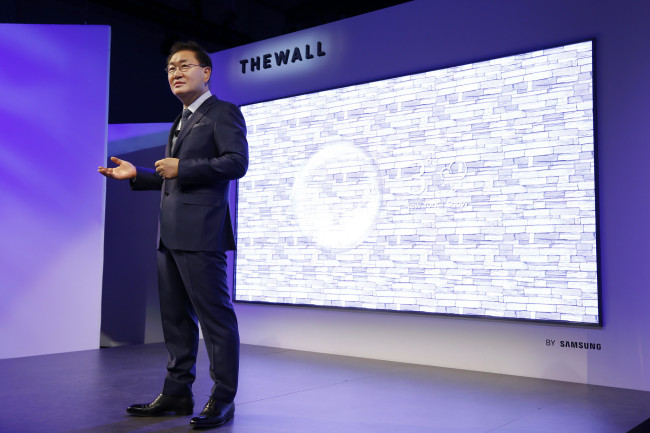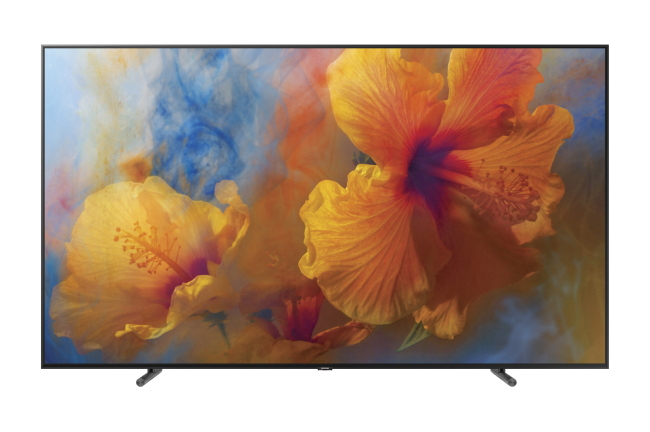Samsung Electronics is heralding an era of 8K video with the introduction of its premium TVs in 2018.
At the Consumer Electronics Show in Las Vegas last month, the company revealed the 8K-resolution Q9S, which is equipped with artificial intelligence that can learn to upgrade videos of lower resolution to 8K quality.
Once the TVs are released to the wider market, they will be able to provide an 8K experience even with content that was not developed at that high resolution.
The 8K resolution is currently the best ultrahigh definition level available for video. It creates lifelike images with pixels so small they cannot be seen even from up close.
 |
Han Jong-hee, president of Samsung Electronics’ visual display business unit, introduces The Wall at the Consumer Electronics Show 2018. (Samsung) |
“Despite the fact that the market is currently flooded with an ever-increasing number of displays capable of realizing super-high resolution such as ultrahigh definition and 8K, many viewers are not able to fully enjoy the experience due to the lack of available high resolution content,” Samsung said in a release.
The ability of TVs to independently create 8K images is a step toward the popularization of not only high-resolution video, but further applications such as no-glasses 3-D video and support for virtual reality content.
In addition to fitting quantum dot light-emitting diode TVs with artificial intelligence, this year promises a lineup of premium TVs from Samsung that have largely improved essential elements of previous models -- such as displaying black.
The QLED technology works by placing quantum dots, which produce color more efficiently than previous technology, using white light-emitting diodes and color filters in front of a backlight.
 |
The Q9 QLED TV from Samsung (Samsung) |
Previously, QLED TVs were less capable of producing true black colors than OLED TVs with individual self-illuminating pixels because light from the backlight would seep between the quantum dots.
However, the 2018 TVs have overcome this obstacle by using a local dimming backlight with an algorithm that lights only those areas that need to be illuminated. The TVs also come with layers of black and anti-reflection filters to improve image quality from any angle.
“QLED TVs are rising quickly both in recognition and sales in the global market after being released in the first quarter last year,” an official with Samsung said on a conference call announcing fourth-quarter results. “We plan to strengthen our QLED lineup and pursue diverse global marketing strategies to expand sales.”
In addition to QLED, Samsung will be pursuing a two-track strategy with QLED and new Micro LED technology. Rather than using a backlight, Micro LED displays clump together red, green and blue LEDs into individual pixels for maximum resolution and size expansion -- as displayed through “The Wall,” a 146-inch (371-centimeter) premium TV revealed at CES.
“We have so far suffered setbacks in expanding sizes of LCD TVs. Most large LCD TVs were 65 inches and 75 inches, but the micro LED TVs can overcome the size issue,” Han Jong-hee, president of Samsung Electronics’ visual display business unit, said at a press conference at CES 2018.
By Won Ho-jung (
hjwon@heraldcorp.com)









![[Today’s K-pop] Blackpink’s Jennie, Lisa invited to Coachella as solo acts](http://res.heraldm.com/phpwas/restmb_idxmake.php?idx=644&simg=/content/image/2024/11/21/20241121050099_0.jpg)